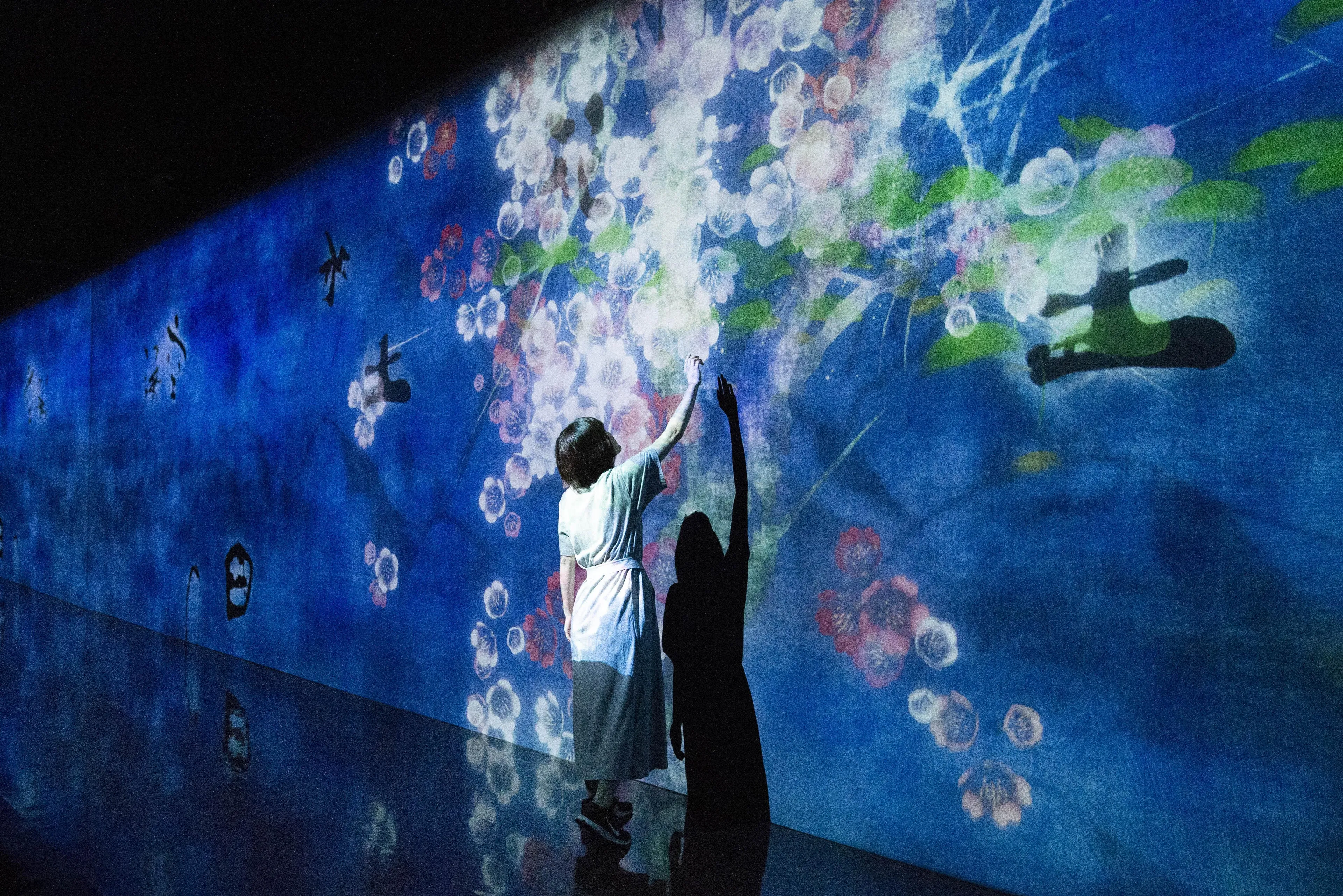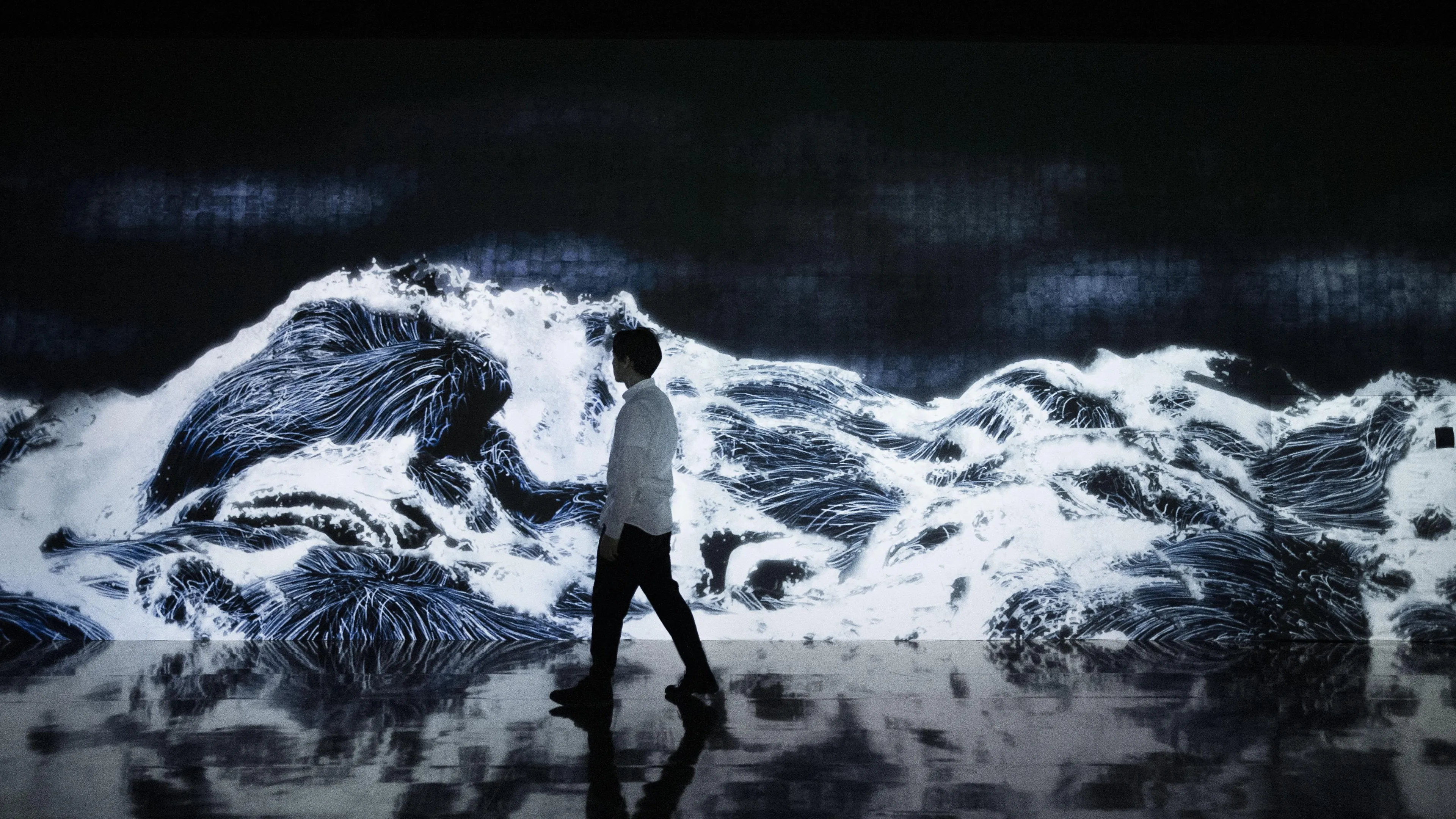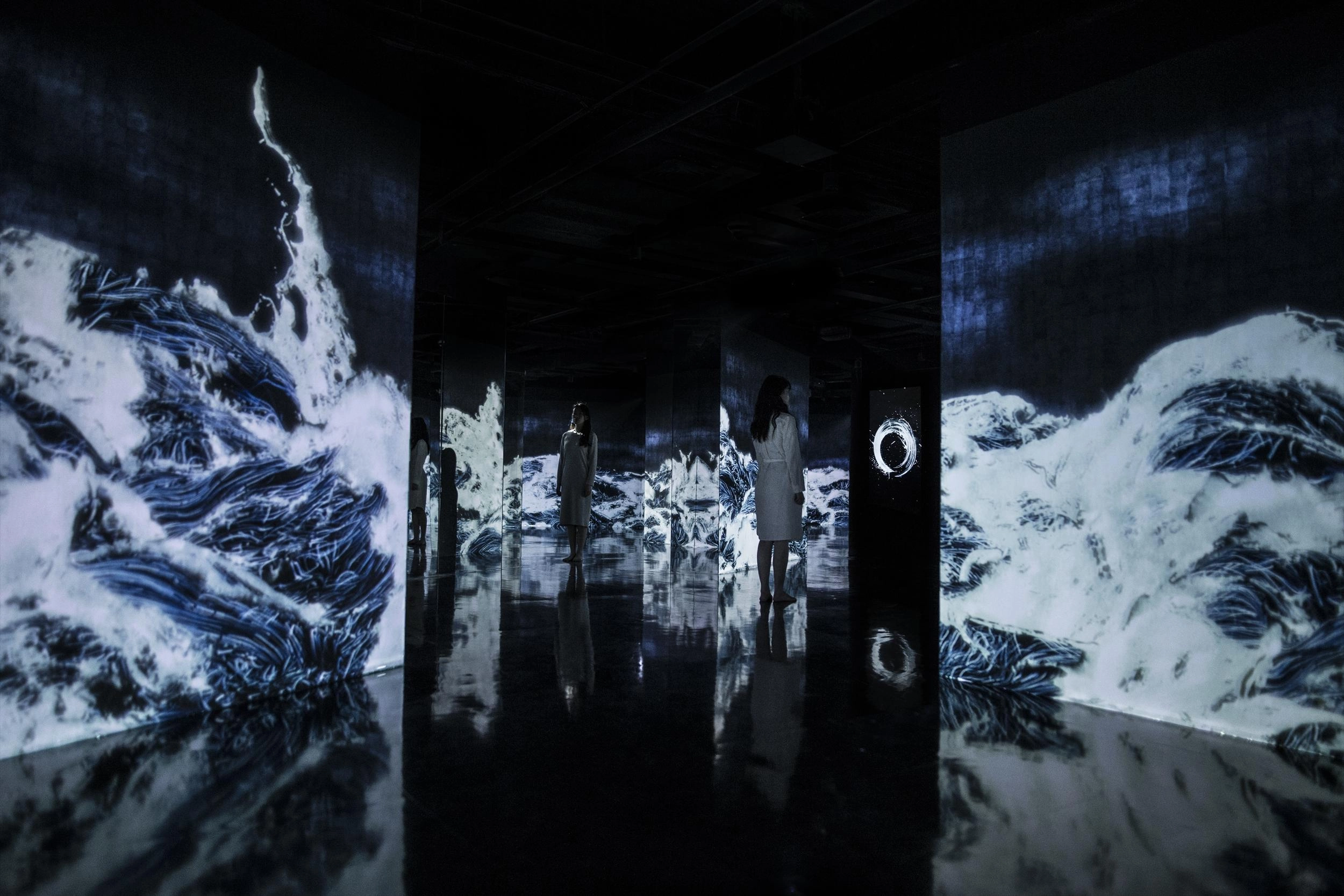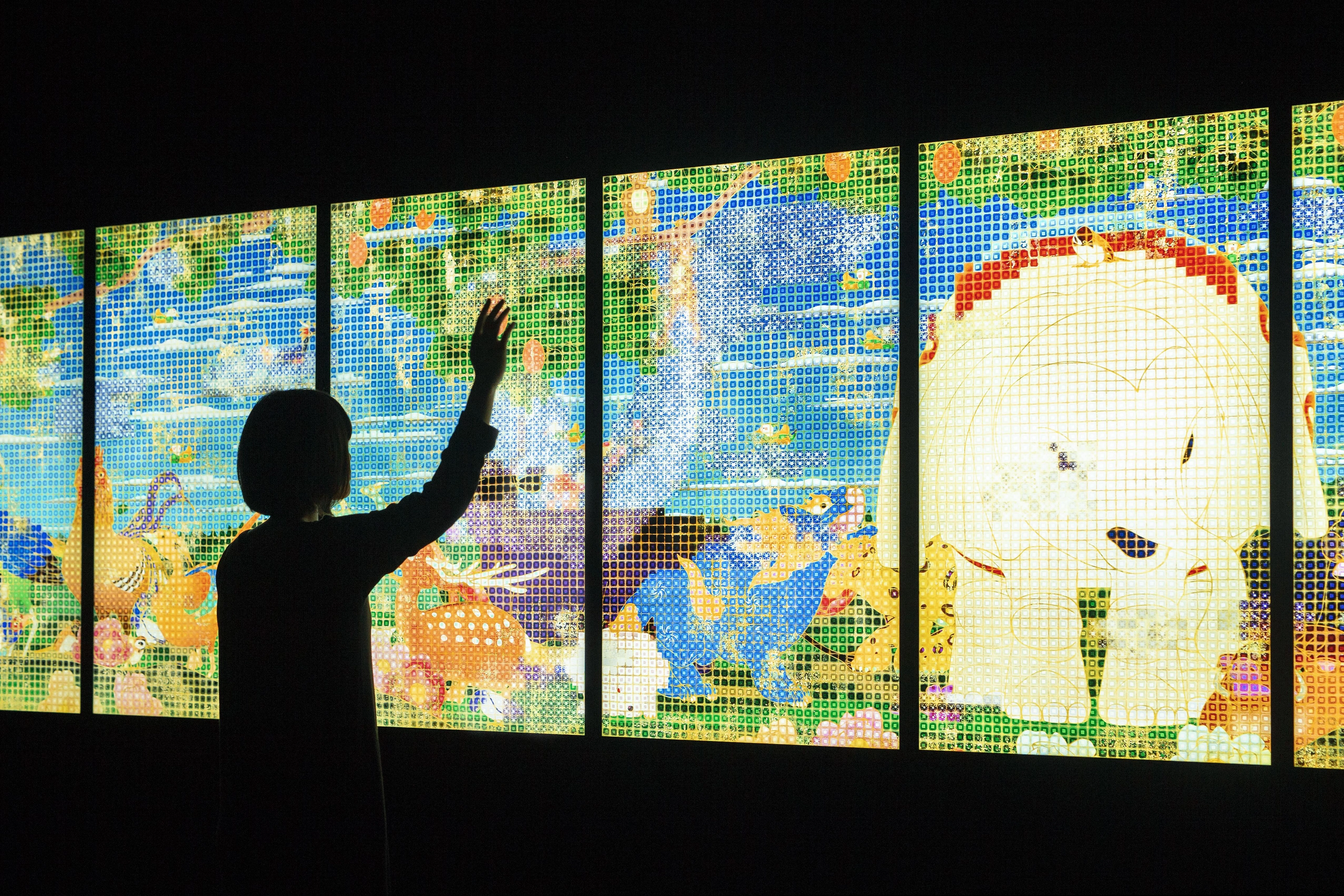teamLab: Born From the Darkness a Loving, and Beautiful World | teamLab
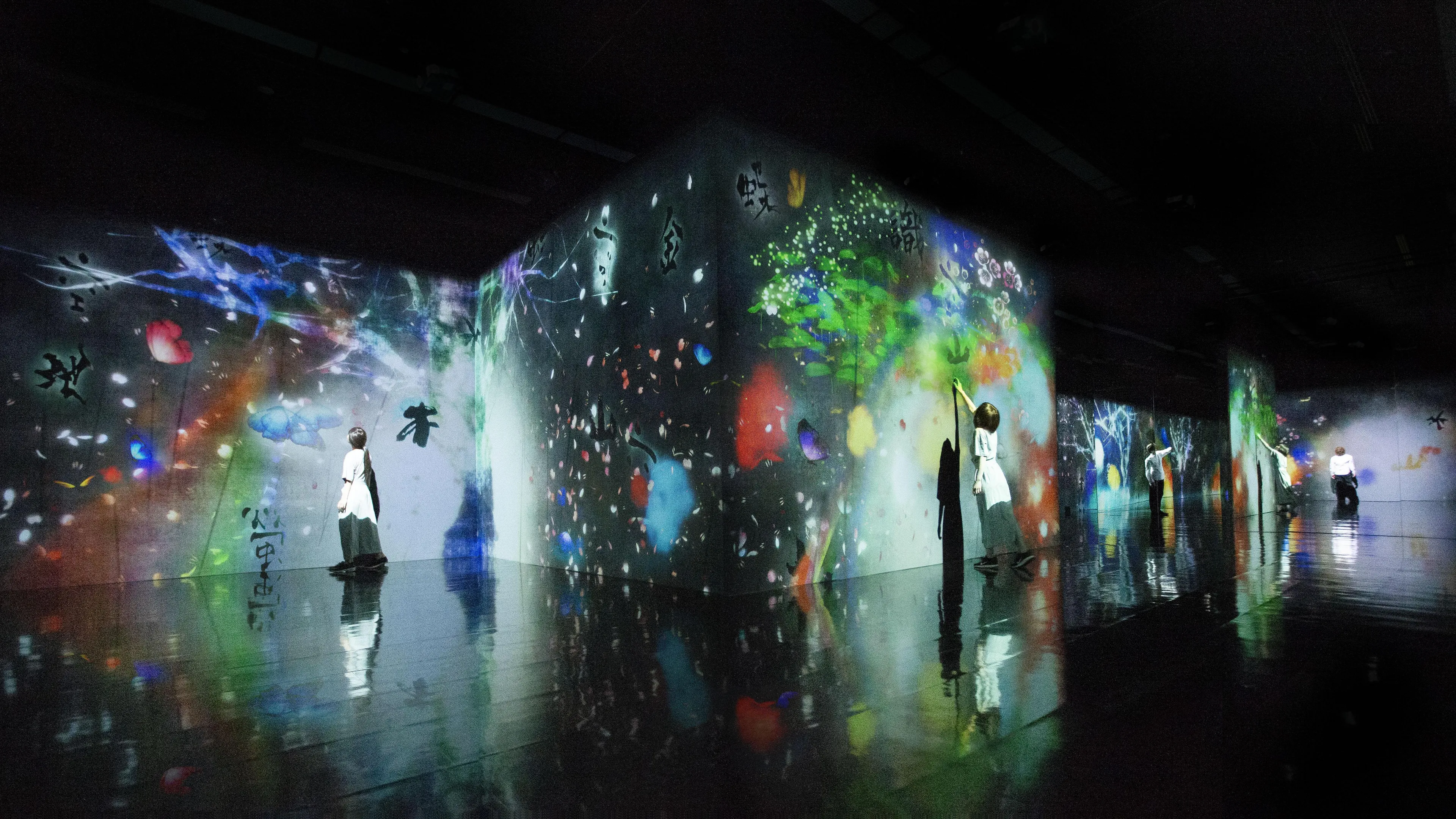
teamLab: Born From the Darkness a Loving, and Beautiful World
المعارض السابقة
6.16(Sun) - 2019.4.20(Sat)Himeji City Museum of Art, Hyogo

teamLab: Born From the Darkness a Loving, and Beautiful World
المعارض السابقة
6.16(Sun) - 2019.4.20(Sat)Himeji City Museum of Art, Hyogo
الأعمال الفنية
حول تيم لاب
"تيم لاب" هو عبارة عن مجموعة فنيّة عالمية (تأسست عام 2001)، يتم التعاون فيها بهدف التعمّق في نقاط الالتقاء بين الفن والعلوم والتكنولوجيا والعالم الطبيعي. فعبر الأعمال الفنيّة، تهدف مجموعة من الخبراء ذوي الاختصاصات المختلفة، بمن فيهم فنانين ومبرمجين ومهندسين، وأخصائي رسوم متحركة، وعلماء رياضيات ومهندسين معماريين، إلى استكشاف العلاقة بين الذات والعالم وأشكال جديدة من الإدراك.
وفي محاولة إلى فهم العالم حولهم، يسعى الناس إلى فصله إلى وحدات مستقلة يتصوّرون حدودًا في ما بينها. ولكن "تيم لاب" يسعى إلى تجاوز هذه الحدود التي تحدّ رؤيتنا ونظرتنا إلى العالم وإلى العلاقة بين الذات والعالم واستمرارية الزمن. فكل شيء قائم في استمرارية بلا حدود، في استمرارية مستدامة وهشّة وخارقة في آن واحد.
تتواجد أعمال "تيم لاب" من ضمن المجموعة الدائمة لمعرض فكتوريا الوطني في ملبورن، ومعرض الفنون نيو ساوث ويلز في سيدني، ومعرض فنون جنوب أستراليا في أديلايد، ومعرض أستراليا الوطني في كانبيرا، ومتحف الفنون آموس ريكس في هلسنكي، ومتحف الفن المعاصر في لوس أنجلوس، ومتحف الفن الآسيوي في سان فرانسيسكو، ومتحف مجموعة بوروسان للفن المعاصر في إسطنبول، وجمعية متحف آسيا في نيويورك، وغيرها.
تيم لاب
وثائق السيرة الذاتية
يتم تمثيل أعمال "تيم لاب" من قبل معرض بايس، ومعرض مارتن براون للفنون المعاصرة، ومعرض إيكان للفنون.
تفاصيل المكان
teamLab: Born From the Darkness a Loving, and Beautiful World
الفترة
6.16(Sun) - 2019.4.20(Sat)
الوقت
10:00 – 17:00 (Last Entry 16:30)
*From April 27 to May 6
10:00 – 18:00 (Last Entry 17:30)
*From April 27 to May 6
10:00 – 18:00 (Last Entry 17:30)
العطل
Mondays
*Open April 29 and May 6
*Open April 29 and May 6
رسوم الدخول
General Tickets
Adult JPY 1,400
High School / University Student JPY 1,000
Elementary / Junior High School Student JPY 600
Free for Preschool Children
Group Tickets (More than 20 people)
Adult JPY 1,200
High School / University Student JPY 800
Elementary / Junior High School Student JPY 400
Free for Preschool Children
Tickets are available at:
Play Guides and Continent Stores
- Ticket Pia (P code : 992-130)
- Lawson Ticket (L code: 53564)
- Seven Eleven
- e+
- Major Play Guide (e.g. CN Play Guide)
- Convenience Stores
Himeji City Museum of Art
*Only General Tickets (not Early Bird Tickets) are available onsite.
Adult JPY 1,400
High School / University Student JPY 1,000
Elementary / Junior High School Student JPY 600
Free for Preschool Children
Group Tickets (More than 20 people)
Adult JPY 1,200
High School / University Student JPY 800
Elementary / Junior High School Student JPY 400
Free for Preschool Children
Tickets are available at:
Play Guides and Continent Stores
- Ticket Pia (P code : 992-130)
- Lawson Ticket (L code: 53564)
- Seven Eleven
- e+
- Major Play Guide (e.g. CN Play Guide)
- Convenience Stores
Himeji City Museum of Art
*Only General Tickets (not Early Bird Tickets) are available onsite.
Exhibition Adviser
Fumio Nanjo
Art Critic, Director of Mori Art Museum
Art Critic, Director of Mori Art Museum
Special Cooperation
Pace Gallery
Takahashi Collection
Takahashi Collection
Notes
- Entrance restrictions will apply if the venue reaches capacity. Thank you for your understanding.
- Please note that contents are subject to change without notice.
- Please note that contents are subject to change without notice.
Contact
Himeji City Museum of Art
Tel. +81 79 222 2288
Tel. +81 79 222 2288
وسائل المواصلات
العنوان
Himeji City Museum of Art
Special Exhibition Gallery
68-25 Honmachi, Himeji City, Hyogo, Japan
Special Exhibition Gallery
68-25 Honmachi, Himeji City, Hyogo, Japan
From JR Sanyo Electric Railway Himeji Station
Take Shinki bus [No. 3, 4, 5, 61, 62, 64, 81, 82, 84, 86] from platform 7 or 8
After approx. 8 minutes, get off at [Himeyama Park South, Medical Center, Himeji City Museum of Art] station.
20 minute walk from JR Sanyo Electric Railway Himeji Station.
For more information, please see here.
Take Shinki bus [No. 3, 4, 5, 61, 62, 64, 81, 82, 84, 86] from platform 7 or 8
After approx. 8 minutes, get off at [Himeyama Park South, Medical Center, Himeji City Museum of Art] station.
20 minute walk from JR Sanyo Electric Railway Himeji Station.
For more information, please see here.
المعارض القريبة

Spatial Calligraphy, Reversible Rotation and Crane - Itami Blue Light, Day & Night
2019.7.24(Wed) - دائم
Osaka International Airport (Itami) SAKURA LOUNGE, Osaka
Public Art
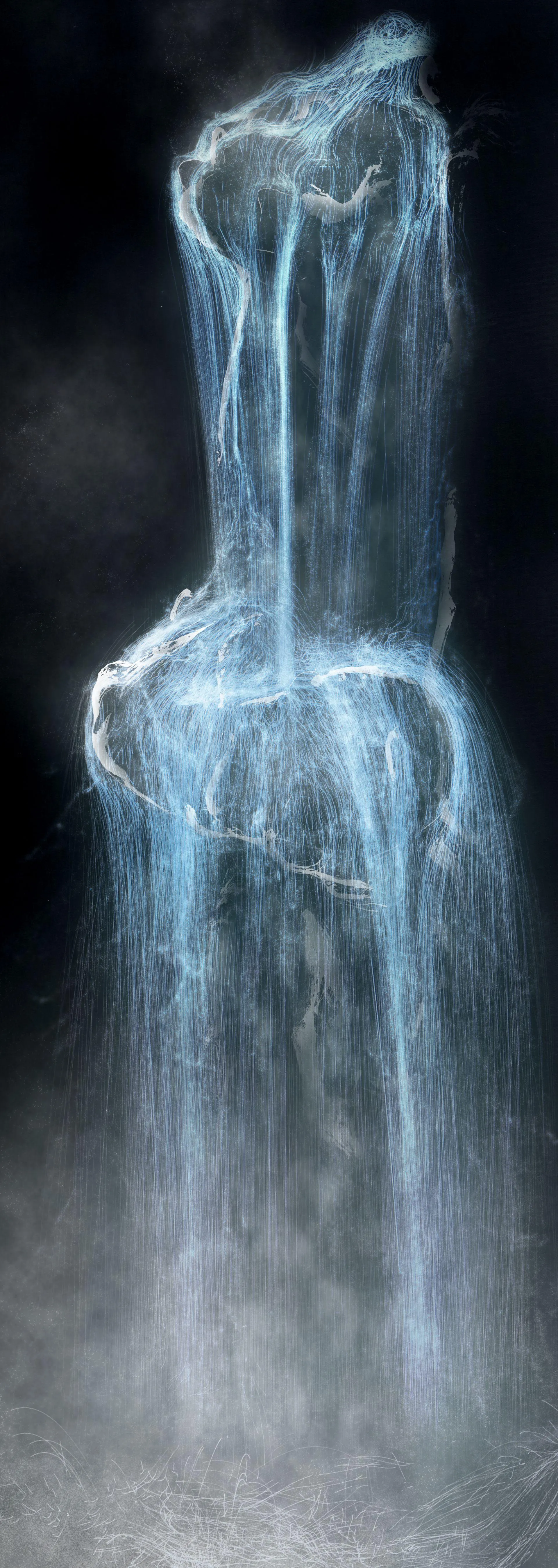
Universe of Water Particles
2015.7.24(Fri) - دائم
DOJIMA RIVER FORUM, Osaka
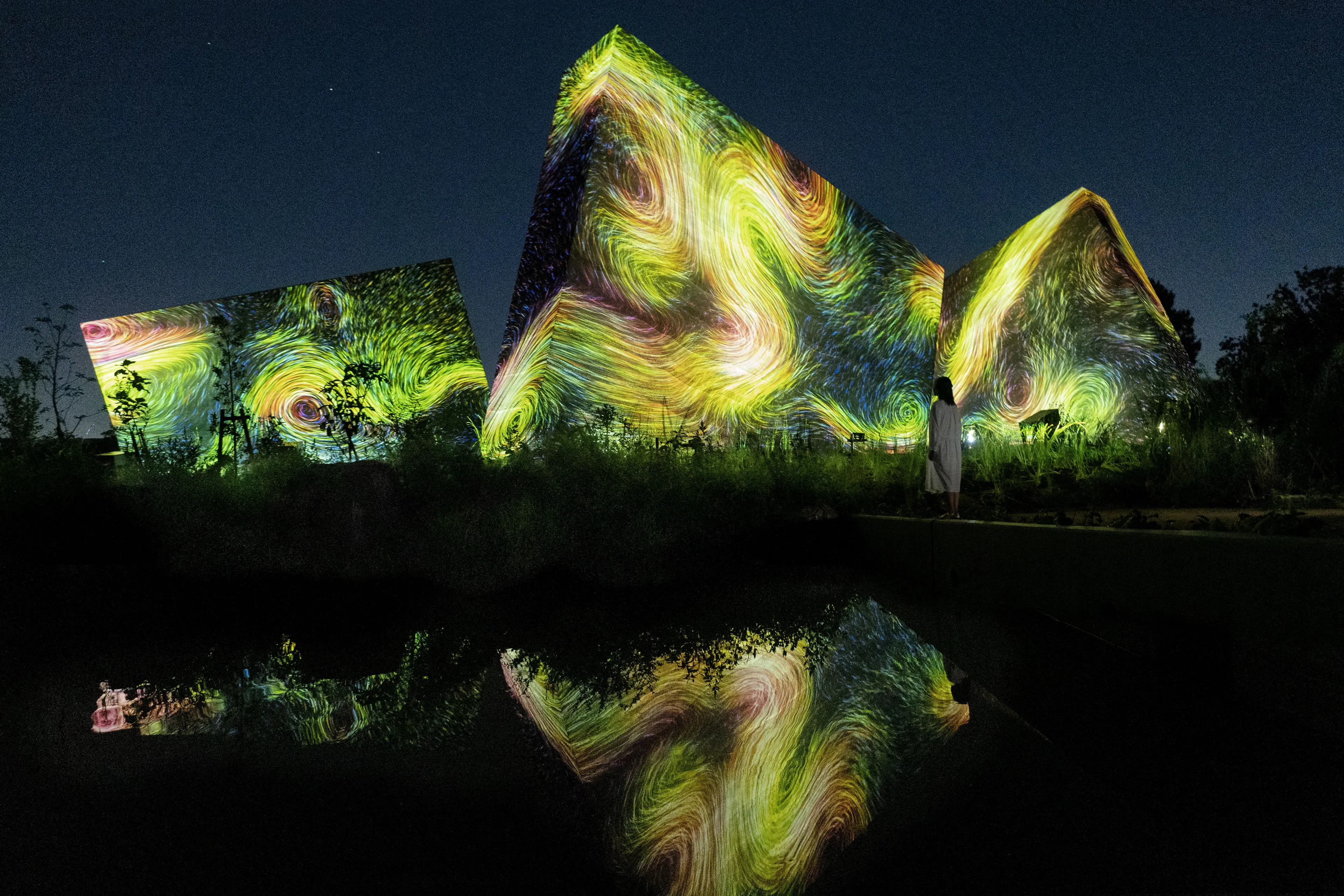
teamLab Botanical Garden Osaka
2022.7.29(Fri) - دائم
Nagai Botanical Garden, Osaka
teamLab Open Air Museum
